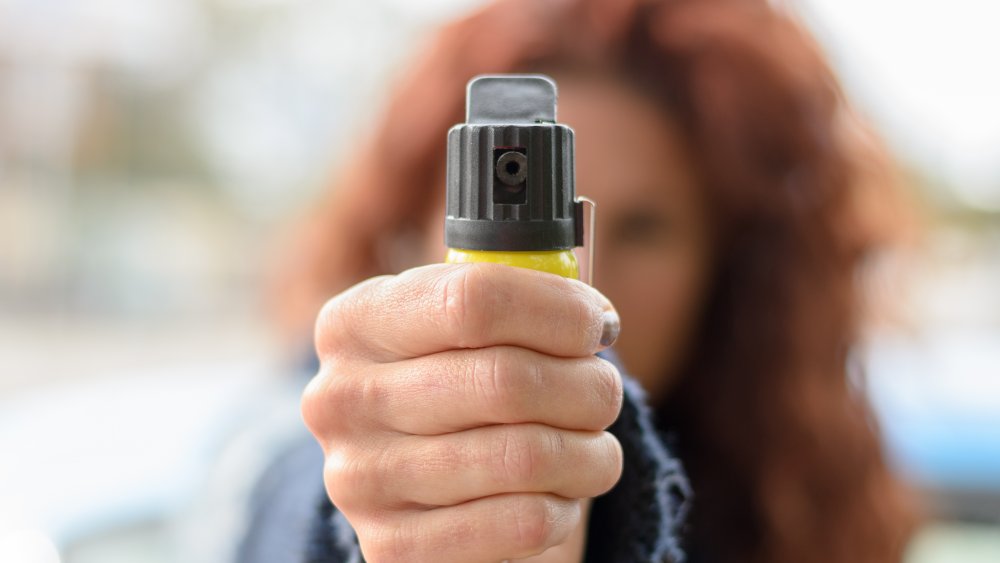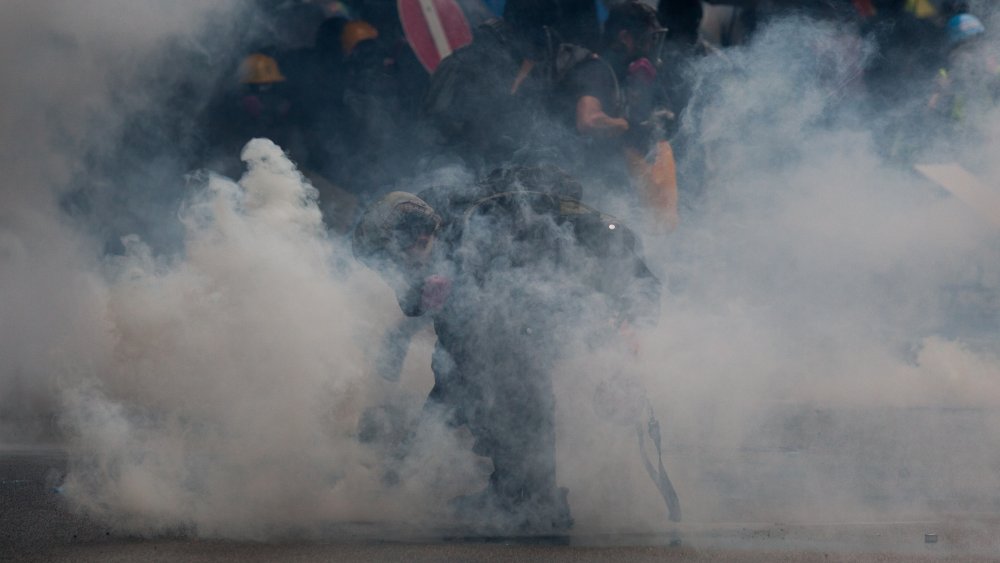The Real Difference Between Tear Gas And Pepper Spray
You're at a demonstration. Things get tense. Emotions escalate. Police have made their entrance to restore order and preserve property. One thing leads to another. Your eyes start stinging and you can't stop crying. Your nose is running, your throat is sore, you're having trouble breathing. Your blood pressure is rising and you're basically rendered helpless — "general debility," as Encyclopedia Britannica phrases it — by some sort of chemical agent. Was it tear gas or pepper spray? Does it actually matter?
Perhaps not to the person who meets with the "riot control agent," as they're loosely defined. Tear gas has historical roots dating back to World War I and perhaps earlier, as chronicled by Vox. As of the 1925 Geneva Protocol it's now banned in warfare, but it's still legal as crowd control, reports USA Today.
Tear gas is usually one of two compounds, chloroacetophenone (CN) or chlorobenzylidenemalononitrile (CS), says the Centers for Disease Control and Prevention (CDC). It's a powder that's dispersed as an aerosol in a liquid, through grenades or personal spray devices. It's supposed to be non-lethal, though in closed spaces, or when encountered by people with respiratory illness, it can prove fatal. There's also the chance of blindness and/or glaucoma. Usually the effects are temporary; once people are removed from the scene and cleaned off, symptoms should subside in 15-30 minutes, according to CNN.
Tear gas and pepper spray are both used in non-lethal crowd control
Pepper spray, on the other hand, gets its oomph from nature: oleoresin capsicum, the stuff in peppers that makes them, well, peppery, says Mental Floss. While tear gas is usually more cloud-like, and therefore more likely to be used against a group, pepper spray tends to be dispersed through a hand-held device of some kind, like an aerosol can, or those self-defense gadgets that you can keep with your keys. It's more directional — think of it as sprayed on a target, rather than enveloping them with a cloud.
Pepper spray is also used in PepperBalls, which are like paintball ammunition, only loaded with that oleoresin we mentioned earlier. They're fired from a device that looks like a paintball gun, too. Again, it's more directional, though when they hit (and when they hit, they hurt) and burst, there can be a spray that can affect those standing nearby. The target is debilitated in much the same way as tear gas — burning in the mucous membranes, runny nose, difficulty breathing. Another way to tell the difference: Tear gas sometimes causes nausea and vomiting, something spared those encountering pepper spray. So there's that, at least.

